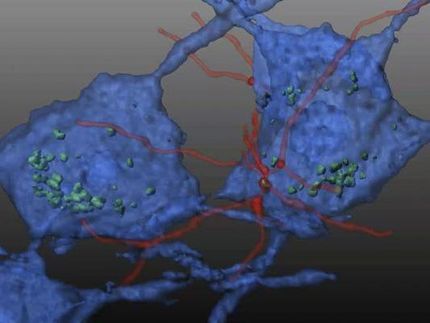Rare genetic disease successfully reversed using stem cell transplantation
Scripps Research scientists correct gene defect in mice that causes lethal symptoms in children
A recent study by Scripps Research Institute scientists offers good news for families of children afflicted with the rare genetic disorder, cystinosis. In research that holds out hope for one day developing a potential therapy to treat the fatal disorder, the study shows that the genetic defect in mice can be corrected with stem cell transplantation.
"After meeting the children who suffer from this disease, like an 18-year-old who has already had three kidney transplants, and the families who are desperately searching for help, our team is committed to moving toward a cure for cystinosis, a lysosomal storage disorder," says principal investigator Stephanie Cherqui, assistant professor in the Department of Molecular and Experimental Medicine. "This study is an important step toward that goal."
In the study, which is published in Blood , the Scripps Research team used bone marrow stem cell transplantation to address symptoms of cystinosis in a mouse model. The procedure virtually halted the cystine accumulation responsible for the disease and the cascade of cell death that follows.
Cystine is a byproduct of the break down of cellular components the body no longer needs in the cell's "housekeeping" organelles, called lysosomes. Normally, cystine is shunted out of cells, but in cystinosis a gene defect of the lysosomal cystine transporter causes it to build up, forming crystals that are especially damaging to the kidneys and eyes.
The only available drug to treat cystinosis, cysteamine, while slowing the progression of kidney degradation, does not prevent it, and end-stage kidney failure is inevitable.
"Cysteamine must be given every six hours, so children have to be woken up each night to take this drug, which has unpleasant side effects, and many others to treat various symptoms," Cherqui says. "So although there is treatment, it is difficult treatment that does not cure the disease."
In the new study, the researchers found that transplanted bone marrow stem cells carrying the normal lysosomal cystine transporter gene abundantly engrafted into every tissue of the experimental mice. This led to an average drop in cystine levels of about 80 percent in every organ. In addition to preventing kidney dysfunction, there was less deposition of cystine crystals in the cornea, less bone demineralization, and an improvement in motor function.
"The results really surprised and encouraged us," says Cherqui, who as a doctoral student in France in 1998 helped discover the gene involved in cystinosis. "Because the defect is present in every cell of the body, we did not expect a bone marrow stem cell transplant to be so widespread and effective."
Cherqui, who generated the mouse model in 2000 that is currently used to study cystinosis, says that adult bone marrow stem cell therapy is particularly well suited as a potential treatment for cystinosis because these cells target all types of tissues. In addition, stem cells reside in the bone marrow for the duration of a patient's life, becoming active as needed, a particular benefit for a progressive disease like cystinosis.
The work of Cherqui and her colleagues may have wider applications for other genetic diseases, providing proof of principle that adult stem cell transplants may be successful in humans for genetic diseases with systemic defects, especially those of a progressive nature.
Cherqui expects to spend the next several years analyzing the safety of genetically modified autologous (obtained from the same individual) bone marrow transplants in the cystinosis mouse and other models before moving on to human clinical trials.
Other news from the department science

Get the life science industry in your inbox
By submitting this form you agree that LUMITOS AG will send you the newsletter(s) selected above by email. Your data will not be passed on to third parties. Your data will be stored and processed in accordance with our data protection regulations. LUMITOS may contact you by email for the purpose of advertising or market and opinion surveys. You can revoke your consent at any time without giving reasons to LUMITOS AG, Ernst-Augustin-Str. 2, 12489 Berlin, Germany or by e-mail at revoke@lumitos.com with effect for the future. In addition, each email contains a link to unsubscribe from the corresponding newsletter.





















































